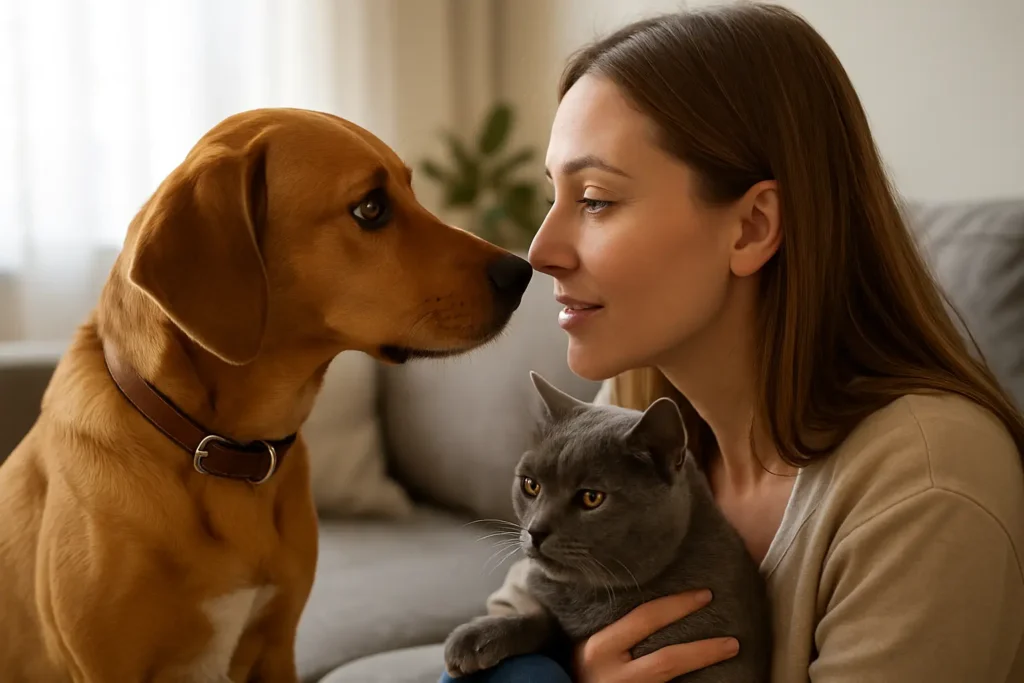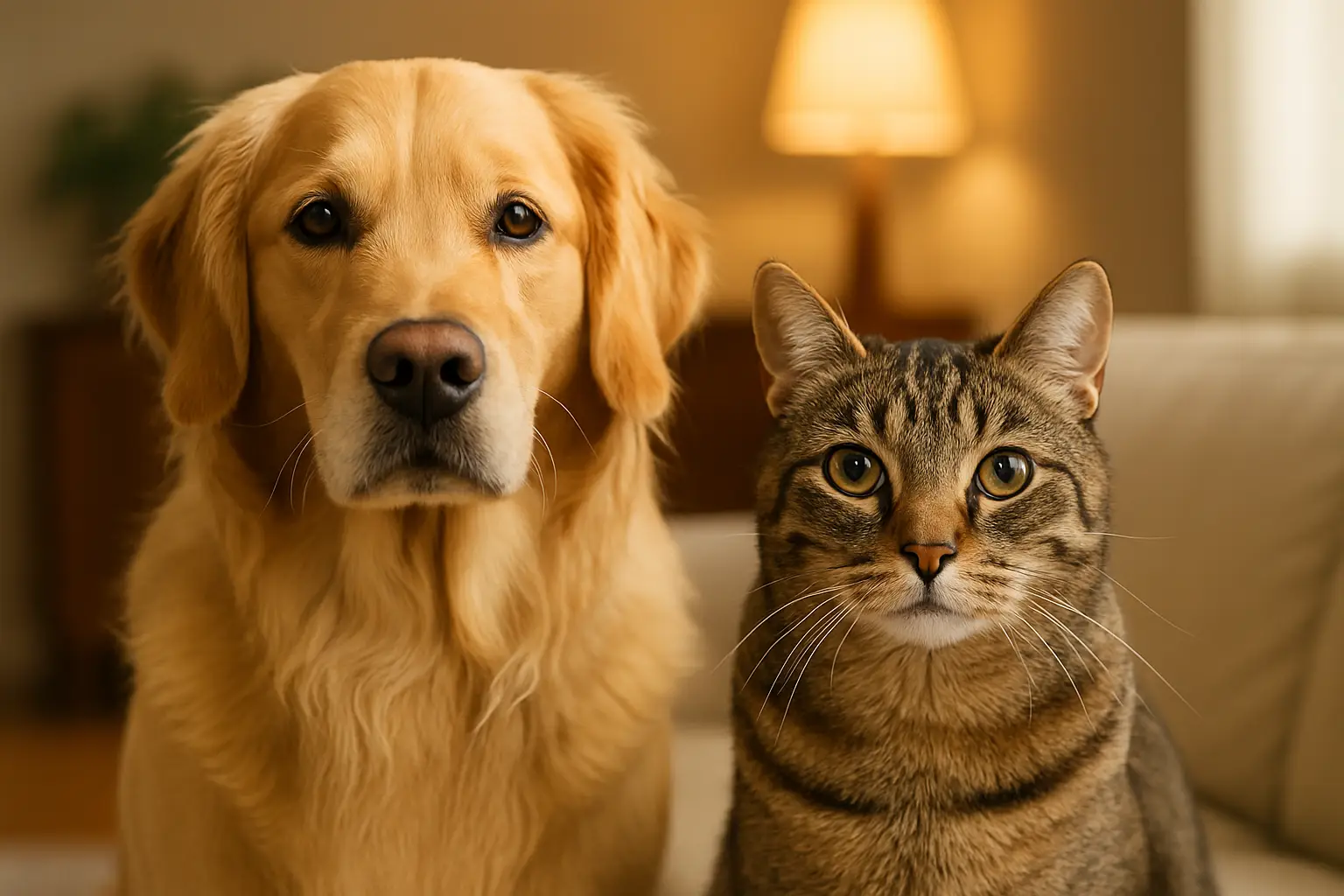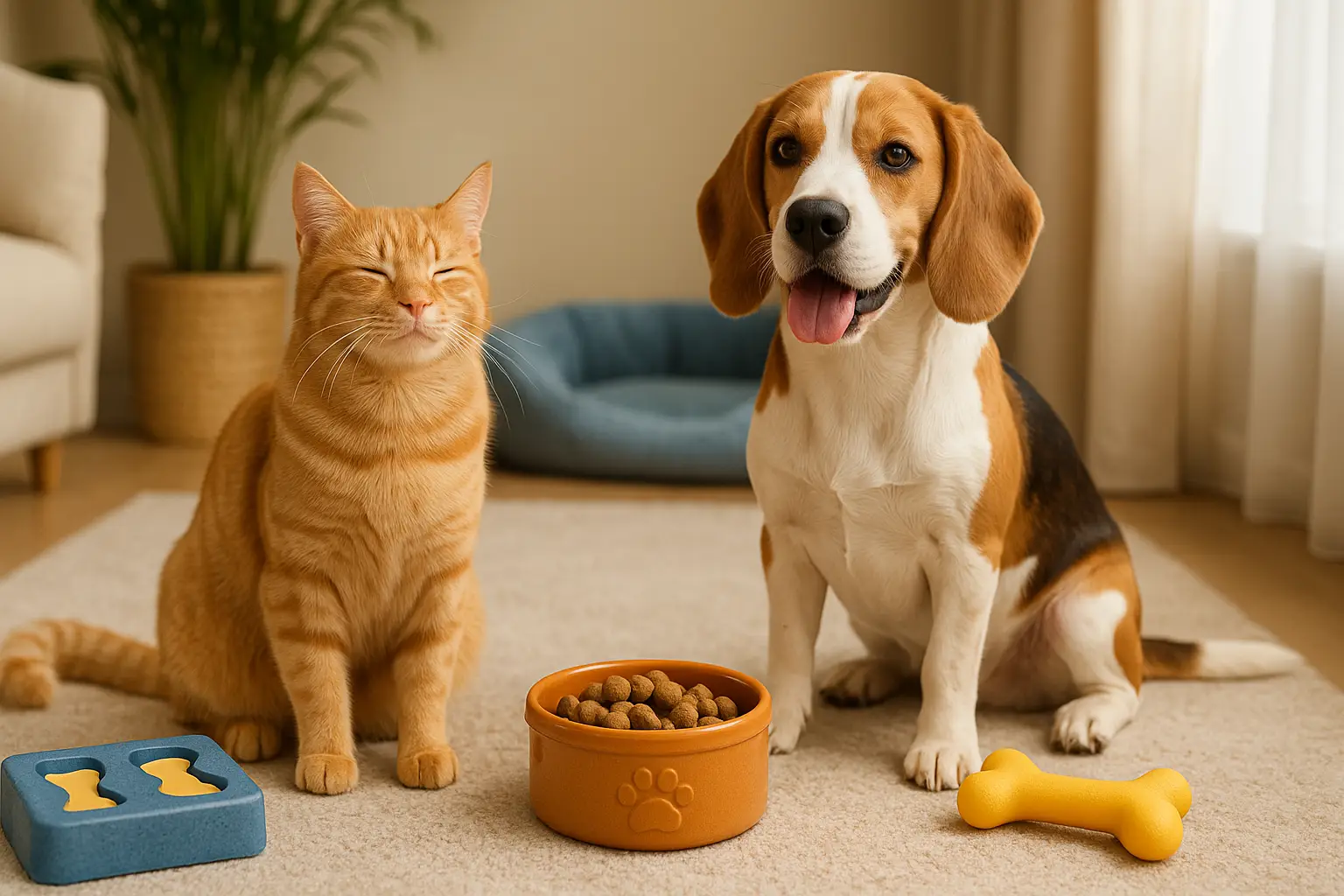How to Improve Communication and Understanding Between You and Your Pet
Communication is the heart of every relationship—including the one you share with your dog or cat. But unlike human conversations, communication with pets doesn’t rely on words. It’s a subtle dance of body language, tone, energy, routine, and trust.
When you learn to “speak” your pet’s language—and help them understand yours—you unlock a deeper connection that goes beyond commands and behaviors. You create a relationship built on mutual understanding and respect.
This guide will show you how to read your pet’s signals, express yourself clearly, and create two-way communication that strengthens your bond every day.

Why Communication with Pets Matters
Clear, consistent communication makes pets feel safe, confident, and connected. It prevents frustration, reduces behavioral issues, and enhances training.
Benefits of Improved Pet Communication:
- Better response to cues and boundaries
- Reduced anxiety or confusion
- Stronger emotional connection
- Fewer misunderstandings or conflicts
- More cooperative, affectionate behavior
Good communication isn’t just about getting your pet to listen—it’s about showing them that you’re listening too.
Step 1: Understand That Communication Is Two-Way
Many pet owners focus on “telling” pets what to do. But the most meaningful interactions happen when you also listen.
Ask Yourself:
- What is my pet trying to say with this behavior?
- How do they show excitement, fear, or confusion?
- Do I respond consistently, or send mixed messages?
The more you observe and interpret their cues, the better your communication becomes.
Step 2: Learn to Read Body Language
Your pet speaks volumes through their posture, tail, ears, eyes, and movement.
Dog Body Language:
- Tail wag: Happy (but also alert or uncertain—watch speed and height)
- Ears forward: Interest or excitement
- Yawning or lip licking: Stress or discomfort
- Tucked tail: Fear or submission
- Play bow: Invitation to engage
Cat Body Language:
- Slow blinking: Trust and affection
- Tail upright with curved tip: Friendly mood
- Flattened ears or dilated pupils: Fear or overstimulation
- Rolling onto back: Trust—but not always an invitation to pet
- Flicking tail: Irritation or excitement
Watch your pet’s full posture, not just one signal. Context is everything.
Step 3: Use Your Own Body Language Mindfully
Your body sends powerful messages—even when you’re not speaking.
Tips:
- Get down to your pet’s level (less intimidating)
- Avoid towering or sudden movements
- Use open posture and soft eye contact
- Offer your hand slowly and palm down
- Approach from the side, not head-on
Pets “read” your energy more than your words. Calm body = calm pet.
Step 4: Pay Attention to Vocal Tone and Intonation
Your pet may not understand the meaning of every word—but they absolutely understand how it’s said.
Vocal Tips:
- High-pitched and cheerful = Playful or praise
- Low and calm = Soothing or reassuring
- Firm and even = Boundary setting
- Loud or harsh = Startling or stressful
Avoid yelling, sarcasm, or rapid-fire speaking. Use short, consistent phrases with positive tones.
Step 5: Use Consistent Words and Cues
Mixed messages confuse pets. Choose clear words or gestures—and use them the same way every time.
Examples:
- “Sit” vs. “Sit down” vs. “Park it” (pick one)
- Hand signal for “come” should always look the same
- Avoid repeating cues rapidly (“Sit! Sit! Sit!”)
Consistency creates understanding. Inconsistent cues create frustration.
Step 6: Watch for Communication Breakdowns
When your pet doesn’t respond, it’s not always defiance—it may be confusion.
Signs of Miscommunication:
- Delayed or partial responses
- Head tilting or backing away
- Excitement turning to stress
- Avoidance or staring blankly
In these moments, reset. Try a gentler cue, different tone, or break the action into smaller steps.
Step 7: Build a Shared Routine
Routine is one of the most powerful non-verbal communication tools you have.
Your pet learns what to expect—and when—through repeated daily rhythms. This reduces confusion and strengthens trust.
Examples:
- Meals at the same times each day
- Morning and evening walks
- “Wind-down” signals like brushing or calming music
- Training and play built into the day
Routine speaks louder than commands. It teaches without words.
Step 8: Practice “Listening” Moments Daily
Make space every day to listen—not just instruct.
Try:
- Watching your pet choose where to rest
- Observing how they greet new people
- Letting them set the pace of a walk or play
- Giving them the choice between toys or activities
These moments show your pet that their voice matters.
Step 9: Respond to Emotional Cues, Not Just Behavior
Behavior is the surface—emotion is underneath.
Instead of asking, “How do I stop this?” ask, “Why is this happening?”
Behavior as Communication:
- Barking = Alert, frustration, or loneliness
- Scratching = Boredom, excitement, or attention-seeking
- Hiding = Fear or overstimulation
- Jumping = Excitement or boundary testing
When you respond to the emotion, not just the action, you build true understanding.
Step 10: Use Positive Reinforcement for Clarity
When your pet does something right, mark it clearly and consistently with praise, treats, or play.
This helps them “lock in” the behavior—and feel proud of the interaction.
Tips:
- Use a marker word (“Yes!” or “Good!”)
- Reward immediately after the correct behavior
- Keep reinforcement short, fun, and energetic
- Don’t over-reward or they’ll lose interest
Positive reinforcement creates communication through encouragement, not pressure.
Step 11: Be Present in the Moment
Distraction is the enemy of connection. When communicating with your pet, be fully there.
- Put away your phone during training or play
- Look at your pet when speaking
- Match your tone and gestures to your words
- Avoid multitasking during important interactions
Your full attention deepens mutual awareness.
Step 12: Create Rituals That Speak Emotion
Daily rituals are emotional shorthand. They say, “You’re safe. I’m here. We’re connected.”
Examples:
- A specific phrase you say before meals
- Greeting them by name in the morning
- Evening brushing or cuddle session
- A word you use to end play with praise
These rituals create emotional clarity. They build love into the routine.
Step 13: Include Gentle Touch and Eye Contact
Touch and gaze are forms of emotional communication—but use them carefully.
With Dogs:
- Pet the chest, behind ears, or under chin (most dogs prefer this)
- Use slow, soft strokes
- Let them lean in or move away freely
- Eye contact should be soft, not staring
With Cats:
- Let them initiate touch
- Pet only where they enjoy it (cheeks, under chin, back)
- Use slow blinking instead of staring
- Allow them to leave at any time
Respect creates trust. Forced affection damages it.
Step 14: Acknowledge Their Communication Attempts
When your pet “speaks,” respond—even if you don’t act.
If your dog brings a toy, say “Thank you!”
If your cat meows, acknowledge with voice or eye contact.
If your pet nudges you, take a moment to respond, then redirect if needed.
Validation tells your pet: “I hear you.” That’s more important than always giving in.
Step 15: Be Patient, Especially During Learning
Learning a language—especially one between species—takes time.
Progress is:
- 3 steps forward, 1 step back
- Moments of confusion followed by clarity
- Frustration transformed into trust through patience
Use mistakes as learning moments. Stay calm. Reframe failure as feedback.
Final Thoughts: Communication Is a Lifelong Conversation
You and your pet are building a language together—one day, one cue, one moment at a time.
It’s not about perfect obedience. It’s about emotional fluency. It’s about looking into your pet’s eyes and seeing understanding, not confusion. It’s about building a shared rhythm where both of you feel seen and heard.
When communication flows, everything else follows. Behavior improves. Trust deepens. Joy multiplies.
And your home becomes more than a space—it becomes a language of love.




Post Comment